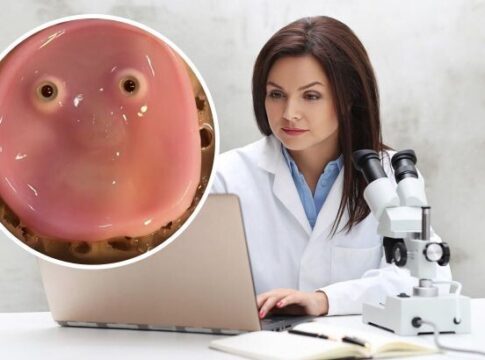In a groundbreaking advancement that could redefine the future of robotics, researchers from the University of Tokyo have engineered a robot face sheathed in living, self-healing skin. This innovative technology, spearheaded by Professor Shoji Takeuchi at the Biohybrid Systems Laboratory, is set to bring us closer to creating humanoid robots that closely mimic human behavior.
Utilizing cultured skin cells, the research team successfully attached the skin to a 3D facial mold. The method employed perforation-type anchors, designed to replicate the intricate structure of human skin ligaments. “The ultimate aim of this project is to create robots with fully-functional, lifelike skin that can heal itself, sense its surroundings, and perform tasks that closely mimic human behavior,” Professor Takeuchi stated in an interview with ABC News.
A video demonstration from the Tokyo laboratory showcased a piece of cultured living skin stretching across a 3D facial mold, transitioning from a neutral expression to a smile. Additionally, the team managed to cover a robotic finger with this skin, enabling it to bend and flick small objects with a fluid, human-like motion.
One of the standout features of this technology is the development of new anchors that do not compromise the robot’s external appearance. These anchors are crucial as they prevent damage to the skin during movement. The researchers emphasize the primary advantage of incorporating living skin: its capacity to self-heal, eliminating the need for frequent repairs.
However, this technological marvel is still in its nascent stages. According to Professor Takeuchi, incorporating other biological systems such as nerves, muscles, and sensory organs remains a significant hurdle. “Developing a method to incorporate blood vessels or an alternative nutrient supply system is one of the key challenges we are working on to extend the skin’s viability outside controlled environments,” he added.
The implications of this research are profound, suggesting a future where lifelike biohybrid humanoid robots could perform tasks with unprecedented realism. While it may be some time before we see Terminator-style robots in everyday life, this development marks a significant step forward in robotics and bioengineering.
For further details, you can refer to the original research published in the journal “Science Robotics” and additional coverage by ABC News. The quest to create robots that seamlessly integrate biological and mechanical systems continues, and the world watches with keen anticipation.


